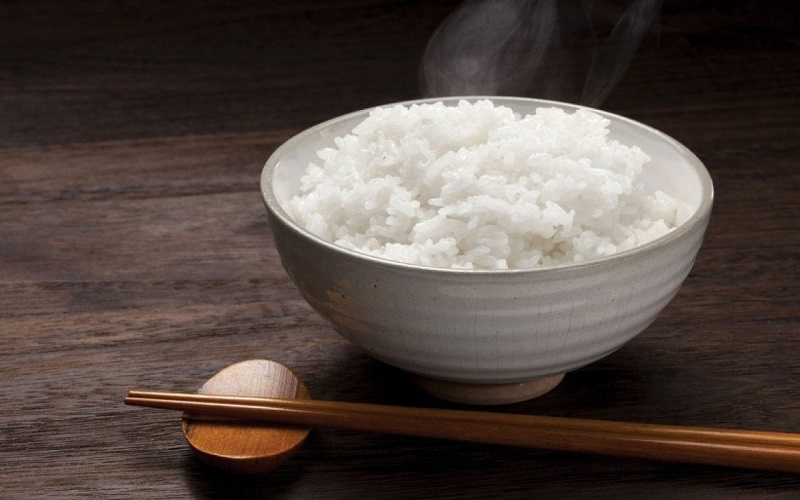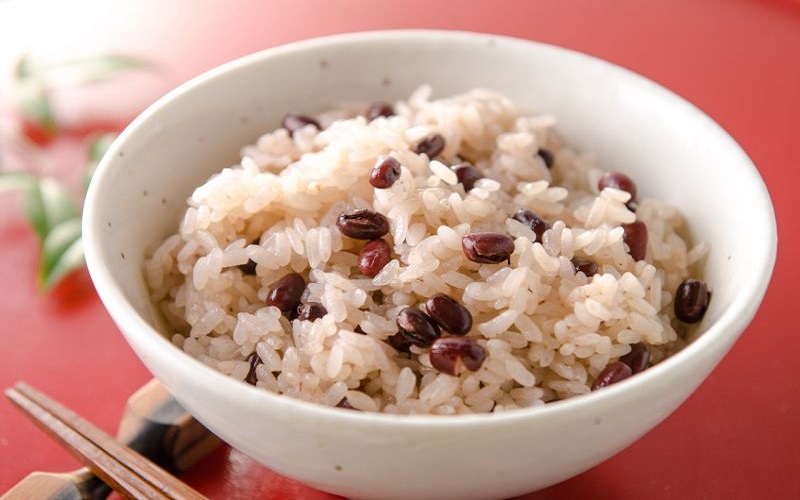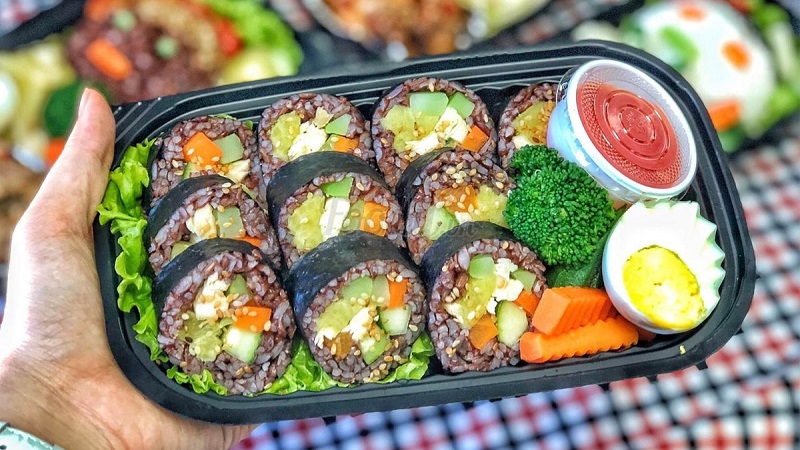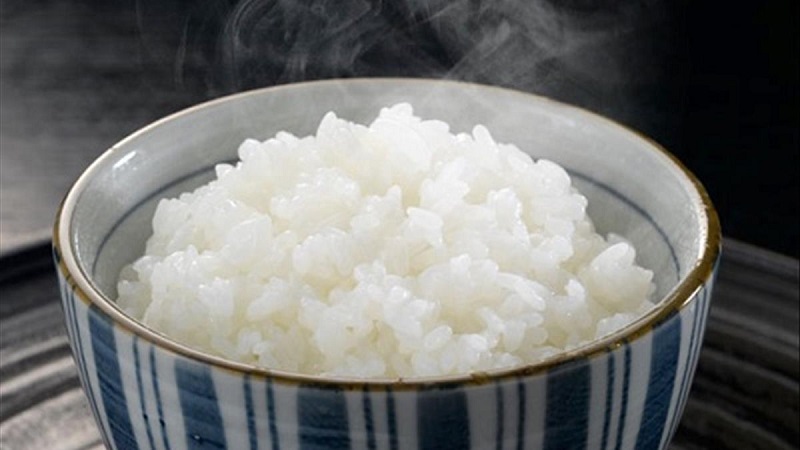Rice is a staple food in many cultures and provides essential nutrients, but is it possible to eat rice and still lose weight? Let’s explore this question and find out how many calories are in a bowl of rice, whether eating rice will make you gain weight, and how to incorporate rice into a weight loss diet.
1. How Many Calories in a Bowl of Rice?
 Rice is a familiar food in the diet of Vietnamese people
Rice is a familiar food in the diet of Vietnamese people
The number of calories in a bowl of rice depends on the portion size and the type of rice. A typical bowl of rice (about 100g) contains approximately 130 Calories and provides the following nutrients:
-
Fat: 0.3g
-
Sodium: 0mg
-
Potassium: 1mg
-
Carbohydrates: 28.2g
-
Protein: 2.7g
-
Calcium: 10mg
-
Magnesium: 35mg
These values are estimates and may vary depending on the type of rice. For example, brown rice has about 627 calories per 100g, while wild rice has 110 calories per 100g. Rice crust, a popular snack in some cultures, has 357 calories per 100g.
As you can see, rice is a nutritious food that provides essential nutrients. However, when combined with oily and fatty foods, the calorie count and nutritional value can increase significantly.
2. Will Eating Rice Make Me Gain Weight?
 Combine a healthy diet with exercise for effective weight loss
Combine a healthy diet with exercise for effective weight loss
Whether eating rice will make you gain weight depends on several factors, including your overall calorie intake, the amount of rice you eat, and your physical activity level. Here are some tips to consider:
- It is best to eat a balanced diet and aim for the recommended daily calorie intake while limiting oily and fatty foods.
- The average adult needs about 2,000-2,300 calories per day, which equates to 667-767 calories per meal.
- To lose weight, it is recommended to eat 1-2 bowls of rice per meal and combine it with regular exercise to burn off excess calories.
- White rice has a high glycemic index (GI), which can lead to increased blood sugar levels and weight gain, especially for those with diabetes.
3. Should I Choose White or Brown Rice?
 Brown rice has only 100-110 calories per 100g
Brown rice has only 100-110 calories per 100g
When it comes to weight loss, many people prefer brown rice over white rice. Here’s why:
-
Brown rice has fewer calories, with only 100-110 calories per 100g, compared to other types of rice.
-
It is a nutritious option, providing more vitamins, minerals, and fiber than white rice.
-
Brown rice retains the outer layer of the grain (bran), which is rich in fiber and minerals, while white rice is stripped of this layer during processing.
-
Incorporate brown rice into your meals to enhance the effectiveness of your weight loss diet.
Choosing brown rice is a healthier option, especially when trying to lose weight, as it provides essential nutrients and keeps you feeling fuller for longer.
4. How to Eat Rice for Weight Loss?
 A proper rice-based weight loss diet
A proper rice-based weight loss diet
It is a common misconception that avoiding rice will help with weight loss. In fact, skipping rice can lead to health issues such as dizziness, anemia, and weakness. Instead, focus on creating a calorie deficit by consuming fewer calories than you burn.
Here are some tips for incorporating rice into a weight loss diet:
Cook Rice with Beans
 Black bean rice is a great choice for weight loss
Black bean rice is a great choice for weight loss
Cooking rice with beans such as black beans, kidney beans, or chickpeas is a great way to boost the nutritional value of your meal. Beans are high in protein and fiber, which can help you feel fuller for longer and reduce your overall calorie intake.
Eat Cold Rice Instead of Hot Rice
 Seaweed brown rice rolls are delicious and healthy
Seaweed brown rice rolls are delicious and healthy
According to Japanese research, cold rice takes longer to digest, making you feel fuller for a longer period. However, cold rice may not be as appetizing, so try making rice rolls with seaweed for a tasty treat.
Choose Brown Rice
 Fried rice with eggs and vegetables is suitable for weight loss
Fried rice with eggs and vegetables is suitable for weight loss
As mentioned earlier, brown rice is a healthier option for weight loss. It is high in fiber, which helps you feel fuller for longer, and contains alpha-lipoic acid, which aids in fat metabolism. Brown rice also has a lower glycemic index than white rice, making it a better choice for blood sugar control.
Frequently Asked Questions About Eating Rice for Weight Loss
How Many Bowls of Rice Should I Eat Per Meal?
 Men should eat 2-3 bowls, while women should eat 1-2 bowls per meal
Men should eat 2-3 bowls, while women should eat 1-2 bowls per meal
According to experts, the recommended daily calorie intake is 2,500 calories for men and 2,000 calories for women. Therefore, it is suggested to eat 2-3 bowls of rice per meal for men and 1-2 bowls for women to maintain a balanced diet.
What About Office Workers? Should They Eat Rice?
Office workers who have a sedentary lifestyle should be mindful of their calorie intake and ensure they get enough physical activity. It is important to maintain a healthy diet and incorporate exercise into your routine whenever possible.
Is It Safe to Eat Cold Rice?
There are concerns about the safety of eating cold rice, with some believing it can cause food poisoning or even cancer. However, according to PGS. TS Nguyen Duy Thinh, there is no scientific basis for the claim that cold rice causes cancer. He states, “As long as the rice is properly cooked and stored, it is safe to consume within 24 hours.”
What Fruits Go Well with Rice?
In many Asian cultures, it is common to eat rice with fruits such as mangoes, watermelons, bananas, or avocados. However, for those with digestive issues, it is recommended to eat fruits separately from meals to avoid any discomfort.
In conclusion, rice can be a part of a healthy and balanced diet, even when trying to lose weight. The key is to practice portion control, choose brown rice over white rice, and combine it with healthy, low-calorie foods. Remember to stay active and incorporate regular exercise into your routine for the best results.






























